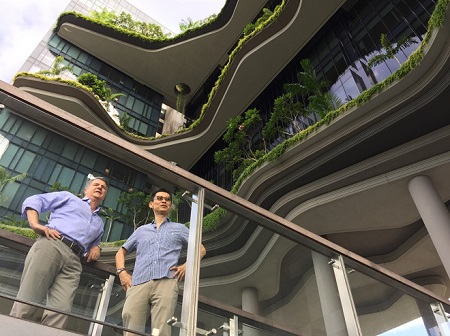
By the year 2050, 75% of the population will live in cities. But how will we find the space to exist? Singapore has been grappling with this question for decades. From a sleepy trading port with no natural resources, to a global financial powerhouse with one of the highest standards of living in the world, Singaporeans are used to battling the odds, and coming out on top. Now celebrating 50 years as an independent nation, and home to more than 5 million people, its leaders and planners have embarked on a mission to ensure its future as one of the most liveable cities on the planet. And that means finding new ways to tackle the challenges of rapid urbanisation, limited space, and an aging population. CNN Asia Pacific Editor Andrew Stevens goes inside major infrastructure projects that are in the pipeline across the island nation, and meets the people and planners behind them, in order to learn about their vision and the challenges of planning for future generations.
Vertical City
When Singapore’s tallest building is completed, the Tanjong Pagar Centre will be far more than a skyscraper full of offices. Instead, it’s being billed as a ‘vertical integrated city,’ including a public park, outdoor event space, and direct links to mass transit.
Building Underground
When you can no longer build up or out, the other option is to go underground. The first phase of Jurong Rock Caverns has opened more than 130m under the seabed on Jurong Island, the first facility of its kind in Southeast Asia.
Smart Healthcare
Public hospitals have launched tele-health, where patients can remain at home and doctors can monitor their condition using in-home sensors. They’re also experimenting with the nation’s first tele-rehab programme, allowing stroke patients to take physiotherapy home.
Airport Of The Future
Singapore’s Changi Airport has ambitious plans to double its passenger capacity, and the size of the entire airport, by the mid-2020s. First on the list, the brand new Terminal 4, now under construction and set to open in 2017.
Solar Cars & Electric Taxis
Students at Singapore’s Nanyang Technological University are designing a 3D-printed urban solar electric car prototype made from plastic. They’ve also working on the first electric taxi for the tropics, with a 200km range and a charging time of just 15 minutes.










